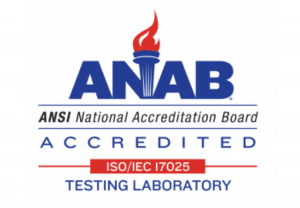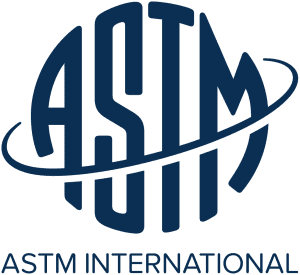Testing Standard:
ASTM D3580 – Standard Test Methods for Vibration (Vertical Linear Motion) Test of Products; ASTM D3580 Vibration Integrity Testing
Standard Number
ASTM D3580
Standard Title
Test Methods for Vibration (Vertical Linear Motion) Test of Products; ASTM D3580 Vibration Integrity Testing
Overview for ASTM D3580:
ASTM D3580 Vibration Integrity Testing is commonly used to assess the ability of a product, component, or system to withstand vibrations that can occur during transportation, use, or storage. This testing helps to ensure that the product or component will function properly, without experiencing damage or failure, under normal operating conditions. Specifically, ASTM D3580 testing can help to:
1) Identify design flaws or weaknesses in a product or component before it is used or put into service
2) Determine the durability of a product or component under a variety of vibration conditions and frequencies
3) Compare the performance of different products or components to determine which one is best suited for a particular application
4) Verify compliance with regulatory requirements or industry standards
5) Improve product quality and reliability by identifying and resolving vibration-related issues before they cause problems for users or customers.
Overall, ASTM D3580 Vibration Integrity Testing is an important tool for ensuring the safety, performance, and durability of products and components that may be subjected to vibrations during use or transportation.
ASTM D3580 – There are technically two test methods rolled in to this one. The two test methods both cover and decide an unpackaged product’s physical effect by vertical linear motion starting at the surface in which the product sample is mounted for the test.
As mentioned, there are two test methods within this standard testing method.
Test Method A – Resonance Search Using Sinusoidal Vibration and
Test Method B – Resonance Search Using Random Vibration
Sinusoidal relates to having some form of curve. Random relates to choosing without method.
*It should be noted that these two tests are not the same and will probably yield differing results. It is not recommended to assume the two tests are the same, even according to measurements. As ASTM.org has mentioned in their 2022 Edition of Standards, “it is possible that tests using random vibration may be more representative of the transport environment and may be conducted more quickly than sine tests.”
Rationale for ASTM D3580:
ASTM D3580 – The data taken from the random and the sinusoidal vibrations of the samples will be used to decide a few things. The determinations can include improved product design, packaging materials needed, as well as transportation vibration mitigation tactics. When damage to the product does occur during vibration, this is what is referred to as the potential product fragility point. This is the point at which the product and package engineering would need to be changed, especially if the frequency evaluated and used on the sample is the same frequency testing while the product is in actual transit. it is important to note that these two test methods don’t necessarily simulate the vibration effects that the product will actually encounter in real-time. There are other related testing standards better suited for accuracy such as that. It is important that the product does not move around inside the packaging if there is a low tolerance for vibration hazards during transit. This fact can be alleviated by designing the packaging to hold relative and useful inserts. The test levels given in test methods stand for the correlation of the best information currently available from doing research. However, if there is more correct data available, it should be substituted for the otherwise previously researched data.
Key Points for ASTM D3580 Vibration Integrity Testing:
- Evaluates the performance of the packaging materials
- Evaluates the response of products to vibrations
- Determines the proper packaging system
- Evaluates the "fatigue characteristics" of a packaged product
Related Standards for ASTM D3580 Vibration Integrity Testing:
- ASTM D1596 - Standard Test Methods for Dynamic Shock Cushioning
At Purple Diamond, we offer a free consultation or a guided tour of our facilities. Consultations can be done over the phone or on zoom, so choose what suits you best. To get in touch, go to our Contact Us page and fill out the form or book an appointment using the calendar below. Our goal is to assist you in any way possible, so please don’t hesitate to contact us. Thank you so much for reading down this far and thank you for considering Purple Diamond as your dedicated testing, engineering, and design facility for all of your packaging needs.

Related Testing Standards
- ASTM D642
- ASTM D685
- ASTM D880
- ASTM D951
- ASTM D999
- ASTM D3078
- ASTM D3103
- ASTM D3285
- ASTM D4169
- ASTM D4332
- ASTM D4728
- ASTM D5265
- ASTM D5276
- ASTM D5277
- ASTM D5487
- ASTM D6055
- ASTM D6179
- ASTM D6344
- ASTM D6653
- ASTM D7386
- ASTM F88
- ASTM F1140
- ASTM F1886
- ASTM F1929
- ASTM F1980
- ASTM F2096
- ASTM F2250
- ASTM F3039
- ASTM D1596
Contact Us
Accreditations
Affiliations

ASTM D3580, testing, testing procedures, test methods, test equipment, specimens, compression testing, tensile testing, flexural testing, dimensional stability testing, hardness testing, tear resistance testing, impact resistance testing, flammability testing, chemical resistance testing, weather resistance testing, aging testing, thermal stability testing, strength testing, elongation testing, compression set testing, fatigue testing, creep testing, abrasion resistance testing, adhesion testing, density testing, color fastness testing, surface hardness testing, tear strength testing, puncture resistance testing, moisture resistance testing, coefficient of friction testing, electrical conductivity testing, thermal conductivity testing, brittleness testing, tear propagation testing.







